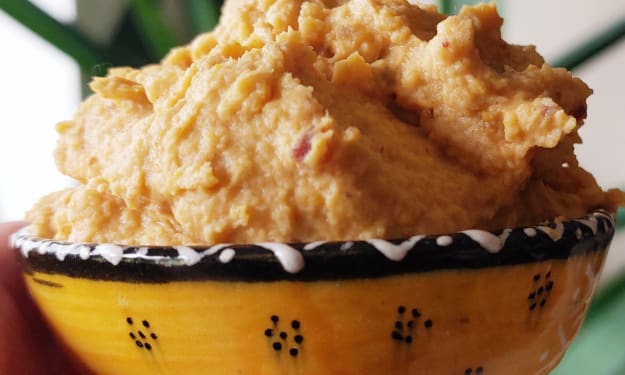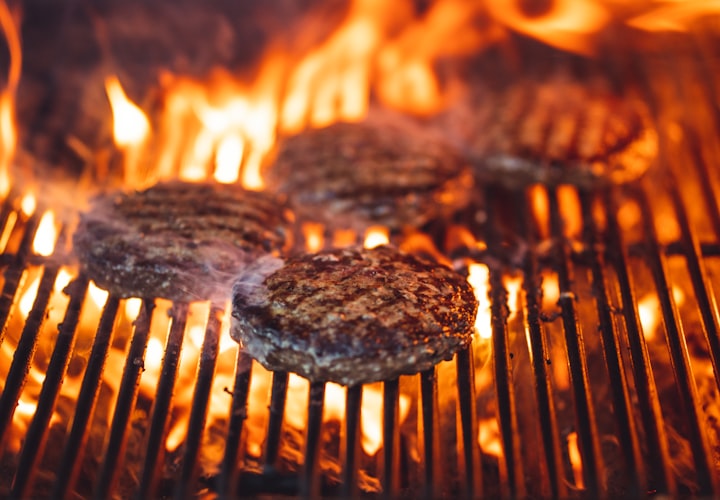The 4th Annual Persian Festival Celebrating Nowruz 1397
A taste of the Mideast

There’s nothing more American than a local festival. As a Floridian, I’ve attended many of these events celebrating diverse themes such as rattlesnakes, kumquats, strawberries, pirates, the English Renaissance, and the Greek Epiphany. When visiting the Daytona-Ormond Beach area for spring break in 2018, a banner for an upcoming festival caught my eye: Come Celebrate Nowruz 1397. Always up for an adventure, we decided it would be added to our vacation agenda. On Sunday, March 18, 2018, my husband and I visited this community event.
Some background on the event. Nowruz is the Iranian (Persian) New Year that dates back thousands of years, and it’s a secular holiday celebrated by several different faiths on the vernal equinox. This family-oriented holiday recognized the year 1397 on the Persian calendar. It’s celebrated outside, usually in an open park, because the belief is that to do so will help one avoid misfortune. There’s so much symbolism and family unity throughout the festival. With so much hatred and misunderstanding in the world, I think it’s vital to attend more of these celebrations in person.
This event was sponsored by the Iranian-American Society of Daytona Beach, and we had no clue what to expect. We pulled into the parking lot with ample spaces left at Rockefeller Gardens, also known as the Casements. The event started at 11, and we arrived there a few minutes afterward. As we got out of the car, we heard catchy pop music in Arabic, and the most appealing mélange of exotic smells filled our senses. This was no ordinary outdoor barbecue. Signs hand-made in blue with Arabic writing hung on the backs of some of the vehicles, positive sayings to support luck and happiness in the new year. On our way into the festival, we were greeted first by some women handing out pamphlets, asking for help to build a daycare/orphanage center where an earthquake had occurred in Iran. I felt bad because I didn’t know about it. It’s easy to be so isolated that we forget that natural disasters happen outside our country. (FYI: the magnitude 5.0 earthquake occurred March 19, 2018.)
Once inside the park area, we saw at least 15 brightly colored tents set up, and maybe 50 visitors already there upon opening. The smell of cooking meat was coming at us from every direction. We decided to make our way around the outside and work our way in. Each tent was staffed by a different vendor or other entity; some were sales-oriented, and others were educational in nature. The first one we went to featured dozens of different baked goods unfamiliar in sight but familiar in smell. Quite an auspicious beginning to a memorable day. Inevitably we had to try one. I picked Qottab, which had dough similar to phyllo and had walnuts and the strong flavor of cardamom, dear to the Iranian palate. There was a paste-like dessert called halva ardeh that had slivered pistachios. I tried some Turkish Delight because of its connection to The Lion, The Witch, and the Wardrobe; it was enough for Edward to leave his family. Turkish Delight is a dense, fruit-laden dessert, incredibly sweet, gummy in texture, and covered in what looked like fine coconut shavings or powdered sugar, often offered in hospitality in Persian homes. It was very good – though a little bit was enough. A container of Flower Baklava caught my eye; small rosettes of the traditional baklava phyllo dough stuffed with almonds and honey, which soon became mine. These were going home with us since we made the mistake of having dessert before the main dishes.
The next tent featured beautiful hand-made rugs, thousands of colors, in different sizes, shapes, and patterns. Some were laid out in front of the tent inviting us to walk across them. A young lady showed us a few special rugs that were over 200 years old. Along with the rugs were ornate dishware, scarves, decorative eggs, and table-runners. Textiles and home goods that would brighten any room. The food in these tents was set up a certain way, which later I discovered was highly symbolic.
Another vendor sold fresh orange juice in wine jugs, jars of fresh honey made from orange blossoms, and Arabic/Persian magazines. Sometimes the collection of items from a vendor didn’t make sense, but the sincerity of the seller was unmistakable. These people were happy to see us and excited to share their culture. Next was the table of perfumes in bottles so ornate it was just as breathtaking as the scents. Square bottles in jewel tones with scrollwork; perfume bottle toppers made with gold and silver filigree. The bottles themselves were treasures to behold, reminding me of the bottle that held Barbara Eden in I Dream of Jeannie. Behind the table was a large exotic hookah, but I think it was for their personal use and not for sale. I was still fascinated by it being a common personal totem and not just a trendy item used by college students.
Families were mulling about, checking out the food from various tents, tastes from their homes generations ago. The voices were joyful, and we didn’t understand one word of it. An older man wearing a white long-sleeved shirt, a black vest, and a black hat was roasting unhusked corn on a smoker grate. And then there were the kebabs. Tons of kebabs. I enjoyed watching the sped-up videos of a Turkish chef named Burak Özdemir who is renowned for making huge amounts of traditional food as he smiles the entire time. When I grew up, kebobs where just things cooked on a stick. S’mores would qualify as a part kebob.
One vendor featured red peppers and meat on a skewer over glowing hot coals; another had what looked like meatloaf pressed against a flat sword blade and roasted over a wood-fired grill. Yet another had skewers of chicken and onions in barrel-shaped smokers. The smoke that filled the area was heavenly and different from anything I had smelled before. The centerpieces for the tables under huge canvas tents where the food was consumed were either hyacinths, purple pansies, or grass sprouts. People sat easily next to strangers to enjoy their food. I eventually ordered some beef kabobs with small tomatoes and pearl onions, served with Arabic flatbread and sprigs of parsley. I tried to identify the ingredients so I might attempt making these at home, but the flavors were different from the typical parsley-oregano-salt-pepper that Americans use.
I cannot begin to recount the colors present everywhere. They’d make a rainbow blush. The silk tops and dresses were flowing from their hangers, purses with a hundred hues, shoes embroidered painstakingly with colorful thread for sale. Brilliant reds, sparking orange, saffron yellow, deep blues. There were many people there wearing some of the abundant colors who were either working there or visiting. I ended up buying a small silk purse with swirling purple designs across swaths of red, gold, and white, and multicolored tassels on each corner. A very good price for an artisan’s creation.
Near the back of the park was an area for children. Since this was a family-friendly event, there were many kids out and about, some in strollers, others pulling on hands to go see the bouncy house or try another tasty dish. The children here were better behaved than in other festivals we’ve gone to; maybe it was the small, intimate atmosphere, or perhaps it was the way they were raised. Either way, it added to the delightful tone of the festival.
In the center of the park was the giant tea tent. Colorful rugs on the floor with pillows and cushions to lounge on, several kinds of Persian tea or chai offered. Silk rugs with hand knotted tassels lightly forming the walls. Huge brass tea vessels at the center arranged on another rug.
At each corner was a table setting feature a different color scheme. This is part of the celebration; each setting (called the Haft Seen/ “Seven S’s”) contained seven items symbolic of the festival:
Sekeh – shiny coin – wealth
Sib – apple - health and beauty
Sabzeh – sprouts – birth
Sonbol – hyacinth – rebirth of nature
Seer – garlic – medicine
Senjed – fruit of the lotus – love
Serkeh – vinegar – age and patience
(if any items are unavailable, they have back-ups:
Samanah – pudding – sweetness of life
Somagh – sumac berries – good conquers evil)
Even the number seven is sacred to the culture since antiquity, and the seven dishes stand for the seven angelic heralds of life. Food as symbols, as cognizant of life, is beautiful. It reminded me of the novel Like Water for Chocolate in which food is shown as indelibly intertwined with the emotions of the people.
At the other end of the park a couple of huge speakers brought forth a mix of old and new music in Arabic; people were dancing here and there throughout the festival. Over the music we heard lilting laughter, families chattering, old friends reuniting. There were no angry voices. There was, however, an alarming lack of attention to personal space. Many people brushed up close to me, and it didn’t seem to be an issue, or even a need for an “pardon me.” This occurred even if there was plenty of space around. A small difference in cultural norms.
Near the speakers, on the raised platform, the program began after some sound system problems. First, the MC welcomed all of us on behalf of the Iranian-American Society. Next they played the Iranian National Anthem, with every person standing respectfully. I didn’t understand a word, but I could see that it was deeply moving to those who had grown up with it. Next, they played the American National Anthem. The same people remained standing; Iranian-Americans standing, with hands over their hearts, listening to their adopted country’s song just as proudly as any other American. It was a moving experience.
After the anthems, the Mecca Dance Ensemble treated us to some traditional dances. The four women wore emerald green flowing dresses with a gold lace overlay, and their scarves floated on the breeze like wispy spider webs in vibrant blue, orange, green, and rainbow. The women’s graceful moves and rhythms entertained us, and in some songs had people sitting in the chairs up on their feet dancing as well. After the dancers, there were singers and musicians, and then a poet, and then the dancers returned. The people sitting out in the bright sunshine were appreciative of their efforts.
We made a return trip around the festival we found a woman making dizi, a soup made of chickpeas, lamb, and tomato. Lamb is a key component in Iranian cooking, mindful of their Islamic roots of Ibrahim’s sacrifice. It’s used in community events like the festival and to share with others. Next to the cauldron of soup another woman was making baghali polo, which smelled like the Cuban yellow rice I’m more familiar with, but there was green in there from fresh dill and fava beans. The deep yellow coloring of the saffron provided more of that bright coloring that matched the key color of the festival. The last item I tried back at the pastry tent was called naga. It was a nutty nougat that reminded me of the Ferrara Torrone that was served on Spanish-Italian holidays. Sweet, candy-like, a dash of honey. That with a cup of strong coffee was the end to a wonderful meal.
One thing kept me wondering…when I think of Iran, the only image I ever had was how it’s portrayed by the news outlets. Lawless people, oppressive burqas, guns, beige buildings reduced to beige rubble. Google “Iran in the news” and up come nuclear weapons, terrorism, guns, broken treaties. And yet here, at this festival of the new year, I saw and savored the real Iranian spirit. Inspired hope, family togetherness, cultural pride, and a loving reception of those around them. The one police officer hired for the event looked bored; there was no hint of potential violence anywhere on the premises. He walked around, looking at the kebobs.
By the time we left, more and more families had arrived and were picnicking on any space left around the green. It had taken on the timbre of an extended family reunion, some with home-made food brought in baskets and coolers; others with the same food we had tasted. The number of people had grown to at least 500, and there was not a single parking spot available. We later found out the signs on the backs of the cars are traditional sayings for the event, such as “Happy Nowruz and New 1397 Year,” “Sal-e Mobarak,” and “As the new year blossoms in all its resplendent glory, I wish you joy and prosperity.” I learned much from this festival; I learned that I have a lot to learn about the others living on this planet even if we don’t get the privilege of traveling long distances. My humble belief is that maybe, if we made ourselves more aware of the true nature (and food) of other cultures by attending more events such as this, we just might be able to carve out some peace of our own to share with future generations.
About the Creator
Barb Dukeman
After 32 years of teaching high school English, I've started writing again and loving every minute of it. I enjoy bringing ideas to life and the concept of leaving behind a legacy.






Comments
There are no comments for this story
Be the first to respond and start the conversation.